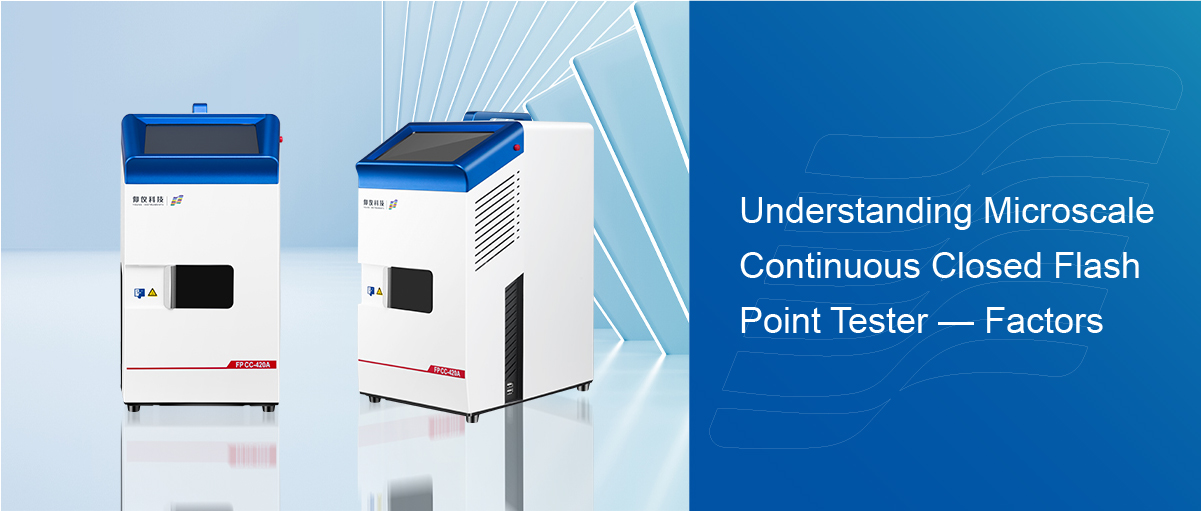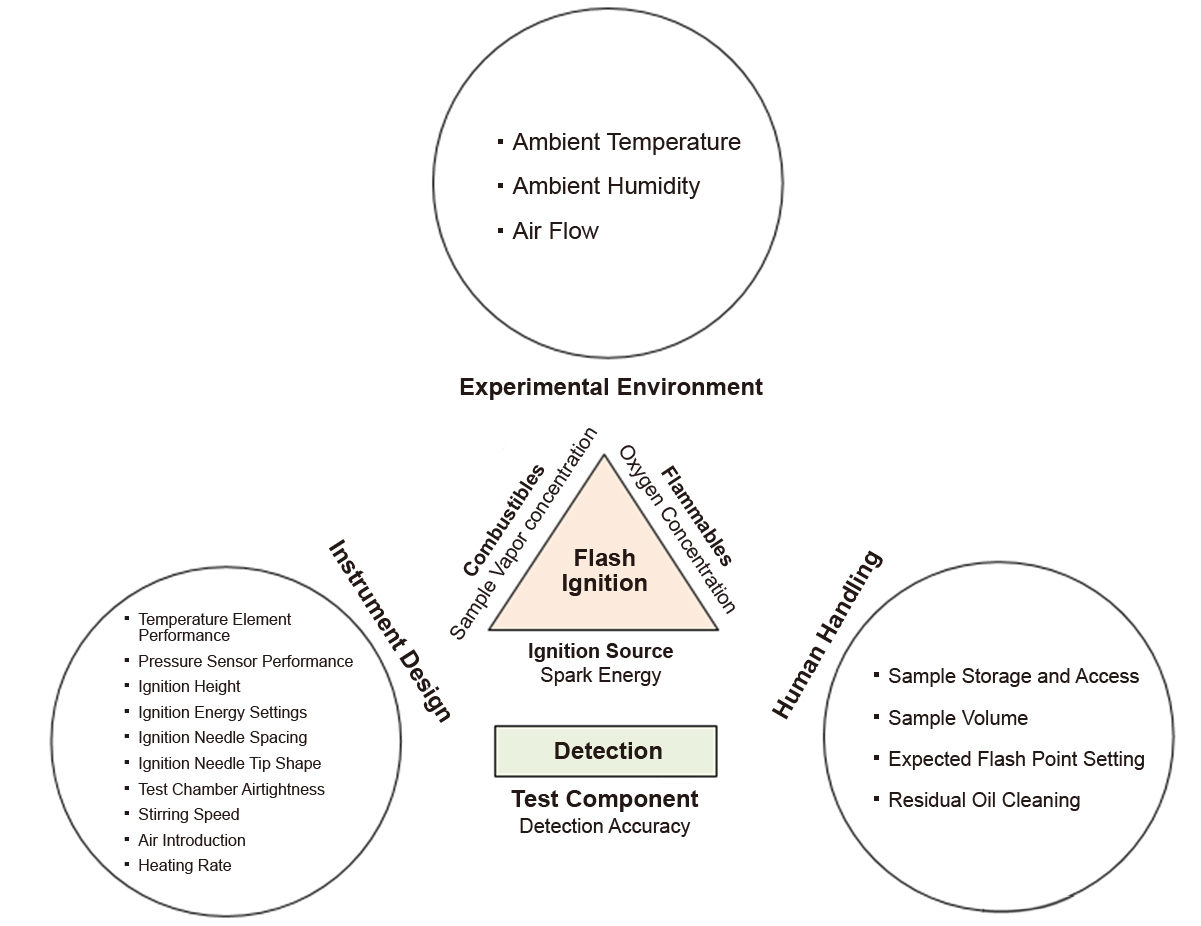Understanding Closed Cup Flash Point Tester — Factors

Introduction of flash point tester
Flash Point Tester is the lowest temperature at which an ignition source can initiate a flash fire of flammable liquid surface vapors under specified test conditions. Flash point is an important safety standard and quality indicator in the chemical industry, especially in the oil industry, and is related to the use, storage and transportation safety of combustible liquids.
Flash point test methods can be divided into two types: closed flash point and open flash point. The open flash point test results will be higher than the closed flash point due to the fact that flammable liquid vapors are not easy to accumulate. In order to To obtain a larger safety margin in the evaluation process, the data from the closed-port flash point test is usually used.
Closed-mouth flash point test methods are mainly divided into Binsky-Martin closed cup method (GB/T 261, ASTM D93), normally closed closed cup method (ASTM D6450, SH/T 0768, SN/T3077.1) and modified continuous closed cup method (ASTM D7094, SN/T3077.2). The flash point test results of the above methods are affected by a number of factors, testers may encounter unsatisfactory results, or the repeatability of multiple test data does not meet the standards. This paper will summarize and discuss the flash point test influencing factors for practitioners to exchange and reference.
Understanding Closed Flash Point Tester — Factors
When a flammable liquid is at its flash point, the vapor concentration near the liquid surface is the lower explosive limit concentration (CLFL). For the closed mouth flash point test, the accumulation of sample vapor concentration to CLFL during the test is a complex non -linear, multi-factor coupling process, which is the result of the cumulative effect of liquid evaporation, gas diffusion, natural convection, forced convection, gas oxidation and combustion, and other effects of continuous or intermittent action. On the other hand, the flash point test results depend on the vapor ignition effect and combustion pressurization detection capabilities. ASTM D6450 and ASTM D7094 test method as an example, Figure 2 summarizes the various factors that may affect the flash point, which can be divided into instrument design, experimental environment and human operation of three factors.

Figure 2 Summary of influencing factors of flash point test
Instrument Design
The design of flash point testers significantly impacts testing outcomes. Parameters such as ignition needle spacing and tip shape directly influence the energy delivered during testing, thus altering the flash point. Moreover, factors like air intake and chamber sealing affect the dynamic changes in combustible and supporting gas concentrations during testing, leading to variations in results. Manufacturers must adhere strictly to standards in structural design, precision machining, assembly, and calibration to mitigate these influences.
Environmental Conditions
Laboratory environments play a pivotal role in flash point testing. Temperature fluctuations can cause electronic components to drift, affecting test results. Similarly, alters air breakdown characteristics, impacting ignition energy and flash point. Poor chamber sealing allows surrounding airflow to dissipate vapor, skewing results. Stable environmental conditions are imperative for accurate testing. Additionally, manufacturers should optimize designs to minimize environmental interference.
Human Factors
Inaccurate handling can significantly affect testing accuracy and repeatability. Improper sample storage or handling may cause volatile component loss, leading to inflated flash point results. Incorrect sample volume affects chamber volume, influencing the time taken to reach critical vapor concentrations and thus altering measurements. Moreover , differing ignition and air intake frequencies during testing can result in gas composition variations, impacting results. Rigorous cleaning between tests is essential to eliminate residual effects. Addressing human factors requires strict adherence to operational protocols and proficiency in technical knowledge and testing experience.
Conclusion
In conclusion, flash point testing encompasses a myriad of interconnected factors. The Microscale Continuous Closed Flash Point Tester by Hangzhou Zeal Instruments Science & Technology Co., Ltd. emerges as a sophisticated solution to these challenges. By prioritizing precision, environmental adaptability, user- friendliness, and continuous testing capabilities, the Microscale Continuous Closed Flash Point Tester revolutionizes flash point testing, ensuring accurate and reliable results in diverse industrial applications.
Reference
[1] Yi Berkelium. Influencing factors and their control when testing according to oil flash point testing standards[J]. China Petroleum and Chemical Standards and Quality, 2015, 000(023):18-20.
[2] JING Xiao, ZHU Jianjun. Introduction to the influencing factors and improvement of petroleum product flash point determination[J]. Chemical Management, 2015, No.389(30):56.






































